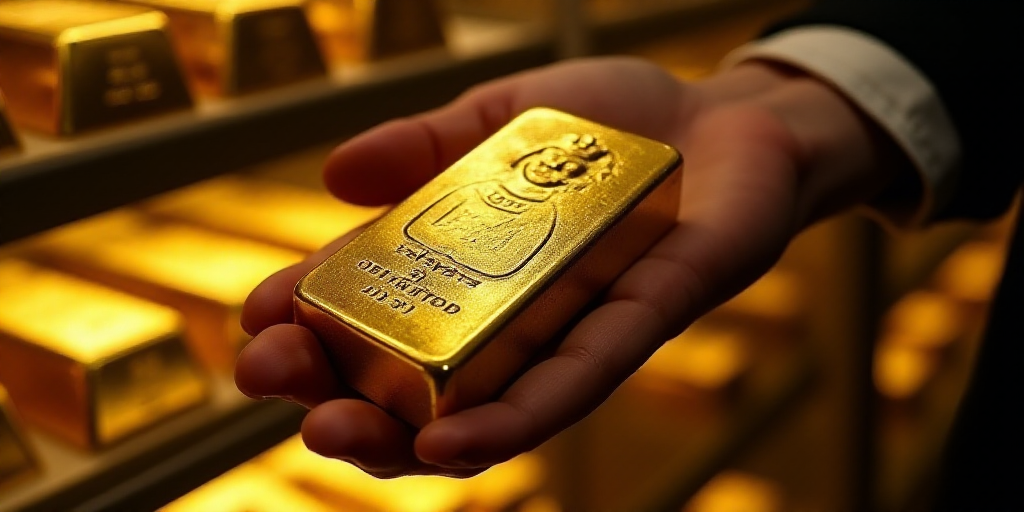Background on the Federal Reserve and its Role in Gold Prices
The Federal Reserve, often referred to as the “Fed,” is the central banking system of the United States. It plays a crucial role in setting monetary policy, including interest rates and controlling inflation. The Fed’s decisions on interest rates can significantly impact gold prices, as lower interest rates make non-yielding assets like gold more attractive to investors.
US GDP Data Surpasses Expectations, Reducing Fed Rate Cut Bets
On Friday, the US Gross Domestic Product (GDP) data for Q2 came in better than expected, indicating a stronger-than-anticipated economic growth. This positive data has led investors to reduce their bets on further interest rate cuts by the Federal Reserve, as lower rates were initially anticipated to stimulate economic growth further.
Impact on Gold Prices
As a result, gold prices remained relatively stable around the $3,700 mark. Han Tan, chief market analyst at Nemo.money, explained that the recent economic resilience in the US has diminished expectations for Fed rate cuts by the end of 2025. The probability of a rate reduction in October and December has dropped by 18 percentage points this week, according to the CME’s FedWatch tool.
Investor Focus Shifts to Inflation Data
With the Fed’s preferred inflation measure, the Personal Consumption Expenditure (PCE) price index, set to be released later in the day, investors are closely monitoring this data. Analysts predict a 0.3% monthly increase and a 2.7% annual rise in August, according to a Reuters survey.
Gold as a Safe-Haven Asset
Gold is considered a safe-haven asset, which means it tends to perform well during times of economic uncertainty and low-interest rates. As investors seek refuge from market volatility, gold’s appeal as a non-yielding asset increases.
Performance of Other Precious Metals
Alongside gold, other precious metals also experienced price movements:
- Silver: The spot price of silver decreased by 0.5% to $45.01 per ounce.
- Platinum: Platinum prices rose by 0.6% to $1,539.44, nearing 12-year highs.
- Palladium: Palladium traded steady at $1,250.4, also heading for weekly gains.
Key Questions and Answers
- What is the Federal Reserve, and why does it impact gold prices? The Federal Reserve is the central bank of the United States, responsible for setting monetary policy. Lower interest rates set by the Fed can make gold more attractive to investors, driving up its price.
- What was the recent US GDP data, and how did it affect gold prices? The Q2 US GDP data surpassed expectations, indicating stronger-than-anticipated economic growth. This positive data reduced investors’ expectations for further Fed rate cuts, causing gold prices to remain stable.
- What is the Personal Consumption Expenditure (PCE) price index, and why is it important? The PCE price index is the Federal Reserve’s preferred measure of inflation. Investors closely monitor this data to gauge potential changes in monetary policy by the Fed.
- Why is gold considered a safe-haven asset? Gold is viewed as a safe-haven asset because it tends to maintain or increase its value during times of economic uncertainty and low-interest rates, making it an attractive investment for risk-averse investors.






